Robert Capa’s missing and supposedly destroyed D-Day negatives — the ones he shipped to London from Weymouth on the morning of June 7, the ones purportedly “ruined” in a freak darkroom accident that night — sit today, intact and available for study, where they’ve sat for years: hidden in plain sight in the Robert Capa and Cornell Capa Archive at the International Center of Photography in New York.
Before that they may have resided in the private collection of Cornell Capa at his New York apartment, according to the Archive’s curator, Cynthia Young. And before that, almost certainly, they sat on the shelves at Magnum Photos.
These “lost rolls” are contained, in contact-sheet form, in a leatherette-covered 3-ring binder whose contents run from January through June 1944. This binder, one of a set of over 50 devoted to Capa’s images, represents one example of a much larger project undertaken by Magnum in its early years, a massive effort to organize and make more easily retrievable the work of that cooperative’s members. (That took place during John Morris’s tenure as Magnum’s “Executive Editor,” 1953-64.)
The binders run chronologically, organized by story or assignment. The picture agency created a set for the work of each member, and produced them in some multiple — at least two, one for the New York office and one for the Paris office, with perhaps a third set for the photographers themselves.
 Young guesses that their production dates to the 1960s; I’d think the late 1950s. If Magnum’s new Executive Director, David Kogan, ever decides to answer some of my questions (which he’s refused to do so far), or Morris opts to go into more detail, perhaps we’ll pinpoint the inception date for this retrieval system, and some of its specifics. This has relevance to the ongoing inquiry into Capa’s D-Day images and their subsequent fate only in that, almost certainly, Magnum put this binder library in place after Robert Capa’s death in 1954. Thus Capa himself would have had no hand in choosing and arranging the contents of the binders devoted to his work.
Young guesses that their production dates to the 1960s; I’d think the late 1950s. If Magnum’s new Executive Director, David Kogan, ever decides to answer some of my questions (which he’s refused to do so far), or Morris opts to go into more detail, perhaps we’ll pinpoint the inception date for this retrieval system, and some of its specifics. This has relevance to the ongoing inquiry into Capa’s D-Day images and their subsequent fate only in that, almost certainly, Magnum put this binder library in place after Robert Capa’s death in 1954. Thus Capa himself would have had no hand in choosing and arranging the contents of the binders devoted to his work.
How these binders got from the Magnum office to the ICP remains unclear. Did they come directly from Magnum, by arrangement with Cornell Capa? Did Cornell acquire them from Magnum and pass them on? If so, when did Magnum deaccession this particular binder and hand it over to him? This matters because the chain of custody may help explain the presence of those presumably destroyed images in the Capa Archive.
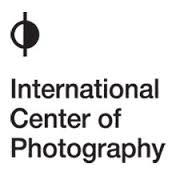 According to Young, after his older brother’s death in Vietnam Cornell took custody of Robert’s negatives and papers and some master prints. Magnum held the contact sheets and press prints. Materials related to Robert Capa entered the ICP’s collection in bits and pieces over the years, following the institution’s founding in 1974. Subsequent to his wife Edith’s death, Cornell downsized his living quarters, and the bulk of his collection of his brother’s materials, as well as his own, came then to the ICP, circa 1999-2000. (By Young’s estimate, Cornell’s holdings constitute 85 percent of the Robert Capa portion of the Capa Archive.)
According to Young, after his older brother’s death in Vietnam Cornell took custody of Robert’s negatives and papers and some master prints. Magnum held the contact sheets and press prints. Materials related to Robert Capa entered the ICP’s collection in bits and pieces over the years, following the institution’s founding in 1974. Subsequent to his wife Edith’s death, Cornell downsized his living quarters, and the bulk of his collection of his brother’s materials, as well as his own, came then to the ICP, circa 1999-2000. (By Young’s estimate, Cornell’s holdings constitute 85 percent of the Robert Capa portion of the Capa Archive.)
The ICP’s Research Center, which houses that material, closed on September 30. It will reopen sometime next spring, at its new home in Jersey City. (The exhibition space and offices will relocate to a building on the Bowery.) When it does, readers of this blog and others will be able to verify the following account by requesting the binder in question. Its accession data appears at the end of this post.
•
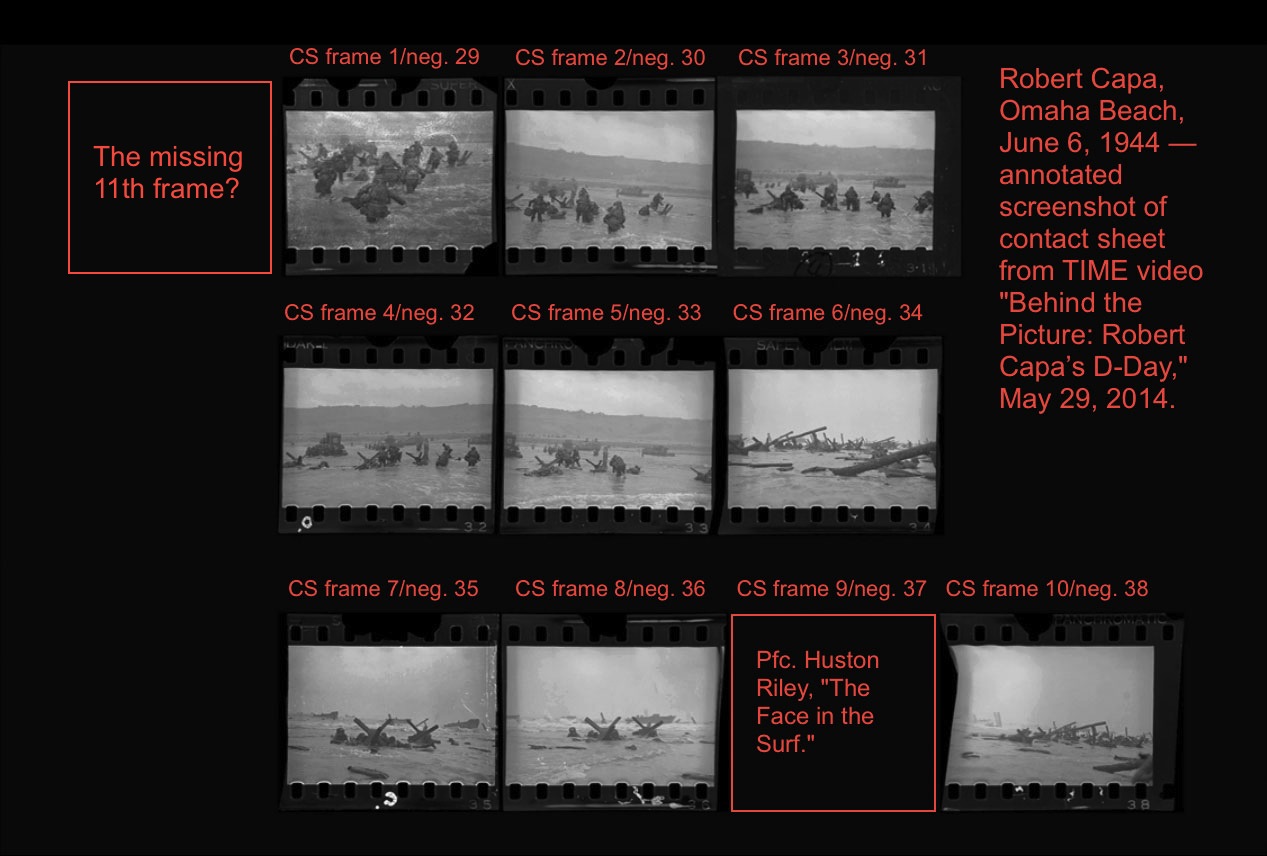
Robert Capa, D-Day images from Omaha Beach, contact sheet, screenshot from TIME video (May 29, 2014), annotated.
I’ve explored the Capa Archive twice this year, once on August 7 and again on September 29 — when I stayed till closing time, 5:30, making me the last visitor to it at its current location. I’d made my first appointment there to view directly what’s left of the “Magnificent Eleven” — the remaining eight negatives of the ten or eleven that Capa exposed on Omaha Beach on D-Day — and the caption notes he scribbled to accompany them. Per previous posts in this series, those notes describe in some detail images he made during the boarding of troops at Weymouth, England and then aboard the U.S.S. Samuel Chase en route to Normandy. They don’t describe the negatives he exposed during the half-hour he spent on Omaha Beach before fleeing the scene.
Research by myself and others on Capa’s D-Day images and their subsequent fate had already determined, with a fair degree of certainty, that those pre-invasion images occupied most of the four rolls of 35mm film received by picture editor John Morris in LIFE’s London office on June 7, with the Omaha Beach images presumably coming at the end of one roll. Even Morris has admitted that “It now seems that those eleven frames probably constitute the entirety of Capa’s Omaha Beach take.” But he has insisted for the past 70 years that the remaining 3-2/3 rolls were for some reason unreadable and useless (unexposed, underexposed, overexposed, damaged while drying), for which reason he trashed them that night.
Imagine my astonishment, then, at opening this binder to find those images staring me in the face. To put it mildly, John Morris’s reports of the loss and/or destruction of these negatives have been greatly exaggerated.
•
The contact sheets for Capa’s pre-invasion 35mm negatives, as seen in this Magnum binder at the Capa Archive, conform almost exactly to the caption notes that accompanied them, except that the images are scrambled, and only 63 images appear there.
• Someone — a darkroom staffer? Morris himself? — cut the negatives into single frames, standard practice during World War II for images one planned to pass through the censorship system, as pictures got approved (or rejected) individually. However, none of these negatives has the half-circle clipped from its edges that we find on Capa’s June 6 Omaha Beach negatives, as in the example shown here. Such clipping, typically done by the picture editor (Morris, in this case), signalled “print this frame” to the darkroom staff.
• In the case of Capa’s pre-invasion negatives, the absence of such markers indicates that Morris never instructed LIFE‘s London darkroom to print any of these negatives. Since negatives of war-related images sent abroad for publication had to pass through a rigorous censorship process, which required that prints accompany each submitted negative, this means that Morris never passed these images through the London censor’s office of SHAEF, and never sent them to Wilson Hicks at LIFE‘s New York office, but instead held them back, for reasons he certainly needs to explain.
Whenever these contact sheets got made, whoever undertook that chore merged the rolls together, for reasons unclear. (Possibly the negatives had gotten scrambled while stored in one or more glassine envelopes.) All but one of the five sheets — they’re presented in landscape orientation — has a row across the top of Capa’s coverage of a briefing for officers held in the gym of the U.S.S. Samuel Chase. Below that, there appear variously two or three rows mixing images of the troops boarding at Weymouth with images of the troops on deck gambling, writing letters, napping, and otherwise at their ease.
The Capa Archive has scanned all these contact sheets, so that they can be viewed as digital files. (They also hold all the original negatives from which someone made these contact sheets.) This enabled a staffer, at my suggestion and upon the request of Chief Curator Brian Wallis, to reconstruct this jumble of negatives into approximations of what they’d look like as contact sheets for their separate rolls, with blank spaces left for missing frames.
•
Neither the scans of the original contact sheets nor the digital files of the recent reconstructions of those negatives into rough versions of their original sequences appear at the ICP website. Here’s what they contain:
• Roll 1: 17 images made at Weymouth, England as the troops boarded the landing craft that took them to the waiting ships. On Plus X film. First readable negative number: 6; last readable negative number: 37. This matches broadly what I’ve designated as Capa’s notes for Contax 35mm Roll 1, below.
• Roll 2: 18 images made in full daylight aboard the U.S.S. Samuel Chase as the troops relax on deck. On Plus X film. First readable negative number: 2; last readable negative number: 37. This matches, frame for frame, what I’ve designated as Capa’s notes for Contax 35mm Roll 3, below.
• Roll 3: 11 images made at a briefing for officers on the plans for the landing, in the gym of the Chase. On Super XX film. First readable negative number: 2; last readable negative number: 36. This, and Roll 4, match none of the three caption sheets shown in the tainted TIME/Magnum video. But they do match a fourth caption sheet, not included in that video but published in the catalogue for This Is War! Robert Capa at Work, the catalogue for a 2007 exhibition curated by Capa biographer and Capa Archive Curator Richard Whelan in which these caption notes (and several of these images) were shown for the first time.
• Roll 4: 17 more images made at that briefing for officers on the plans for the landing. On Super XX film. First readable negative number: 3; last readable negative number: 36. As you can see above, Capa’s caption notes on this briefing mention only one roll, but duplicate negative numbers show indisputably that he exposed two rolls in that situation.
Curator Young handed me low-quality printouts of the ICP’s reconstructions of these rolls as I left on September 29. I don’t have permission to reproduce those here, but the digital files from which they got printed reside in the Capa Archive, so I assume the possibility of independent verification of my commentary thereon, and certainly anticipate that someone will corroborate my descriptions of this primary source material.
For anyone who wishes to verify the above (which scrutiny I invite), or wants to examine these negatives for other purposes, they’ll become accessible again once the Capa Archive opens in its new Jersey City digs, sometime between March and May 2015. If the ICP decides in the meantime to put them online for the convenience of researchers, I’ll publish that information here. In either case, here’s the accession number of the Magnum binder discussed above:
Binder: Robert Capa 1944-3A-4C
Section: Robert Capa 44-4A
Section title page: PRE INVASION PREPARATIONS (typed, crossed out by hand)
And the ICP’s filenames for the relevant scans of the contact sheets of Capa’s pre-invasion images: capa_robert_1944-4B-1.jpg, capa_robert_1944-4B-1a.jpg, capa_robert_1944-4B-1B.jpg, capa_robert_1944-4B-2.jpg, capa_robert_1944-4B-2A.jpg, capa_robert_1944-4B-3.jpg.
More on these negatives, and their implications, and related matters, in my next post.
•
(For an index of links to all posts in this series, click here.)



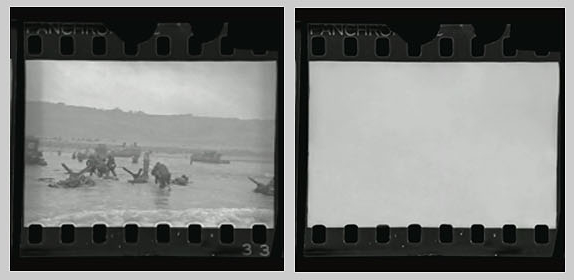
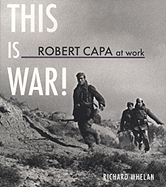
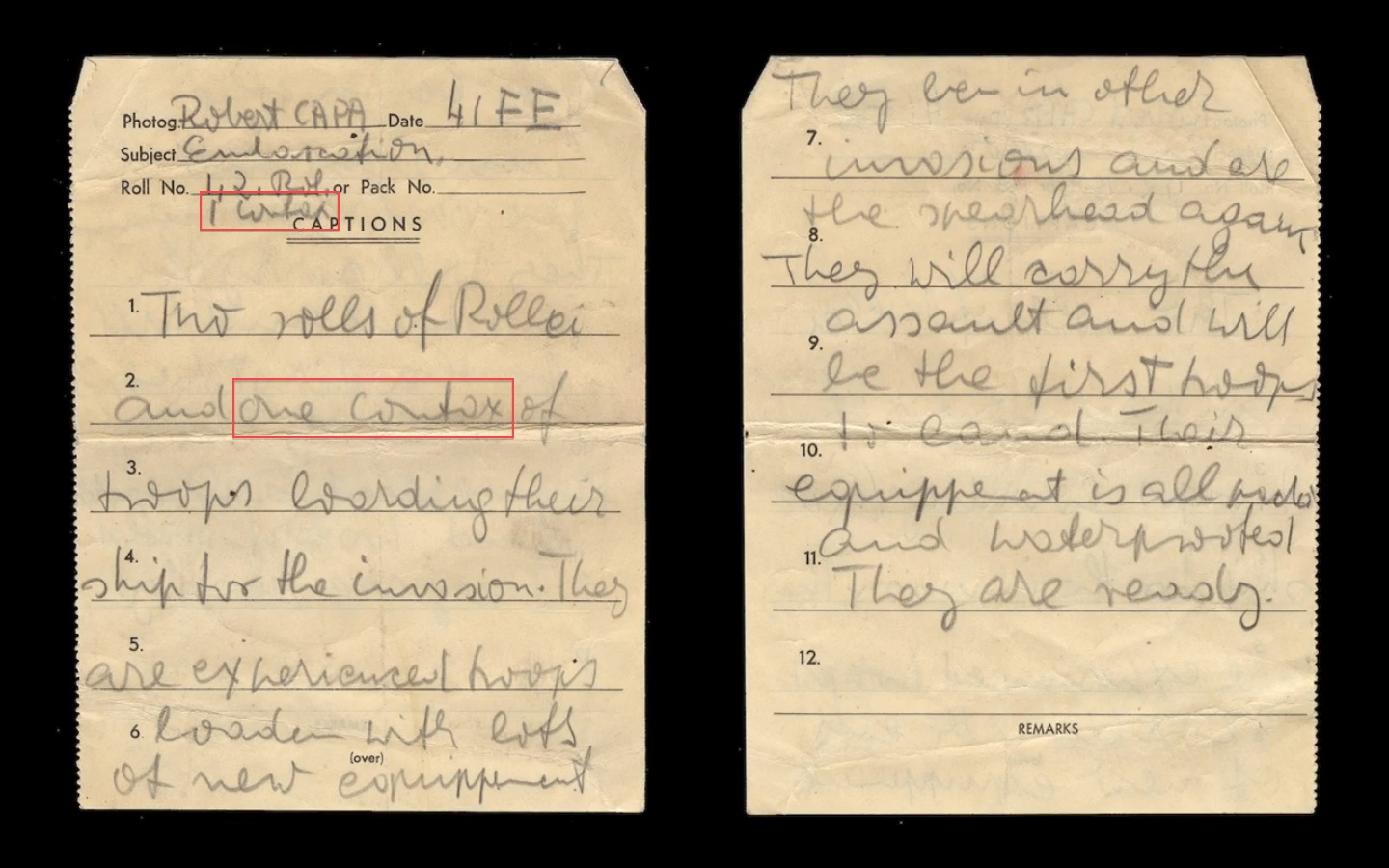
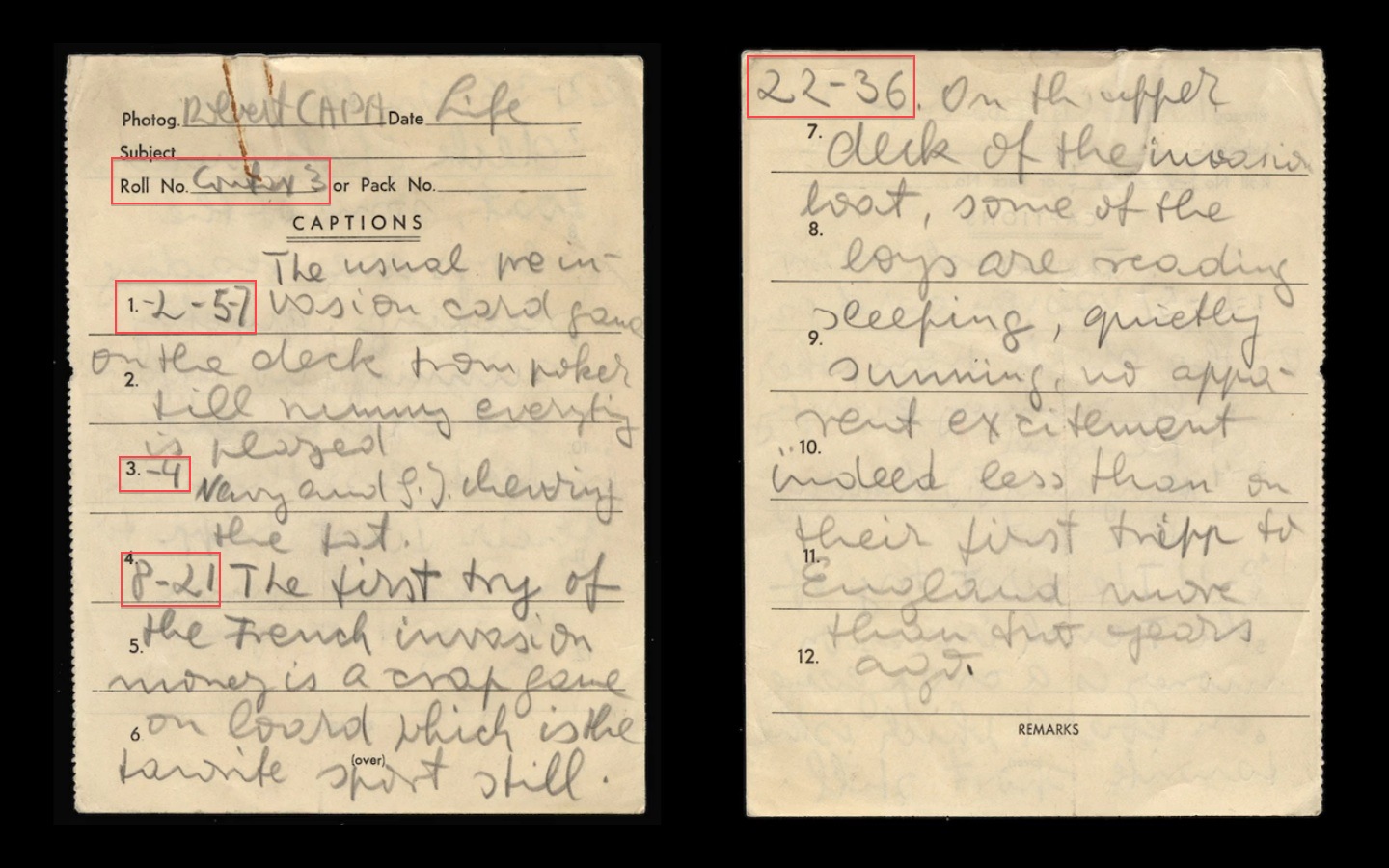
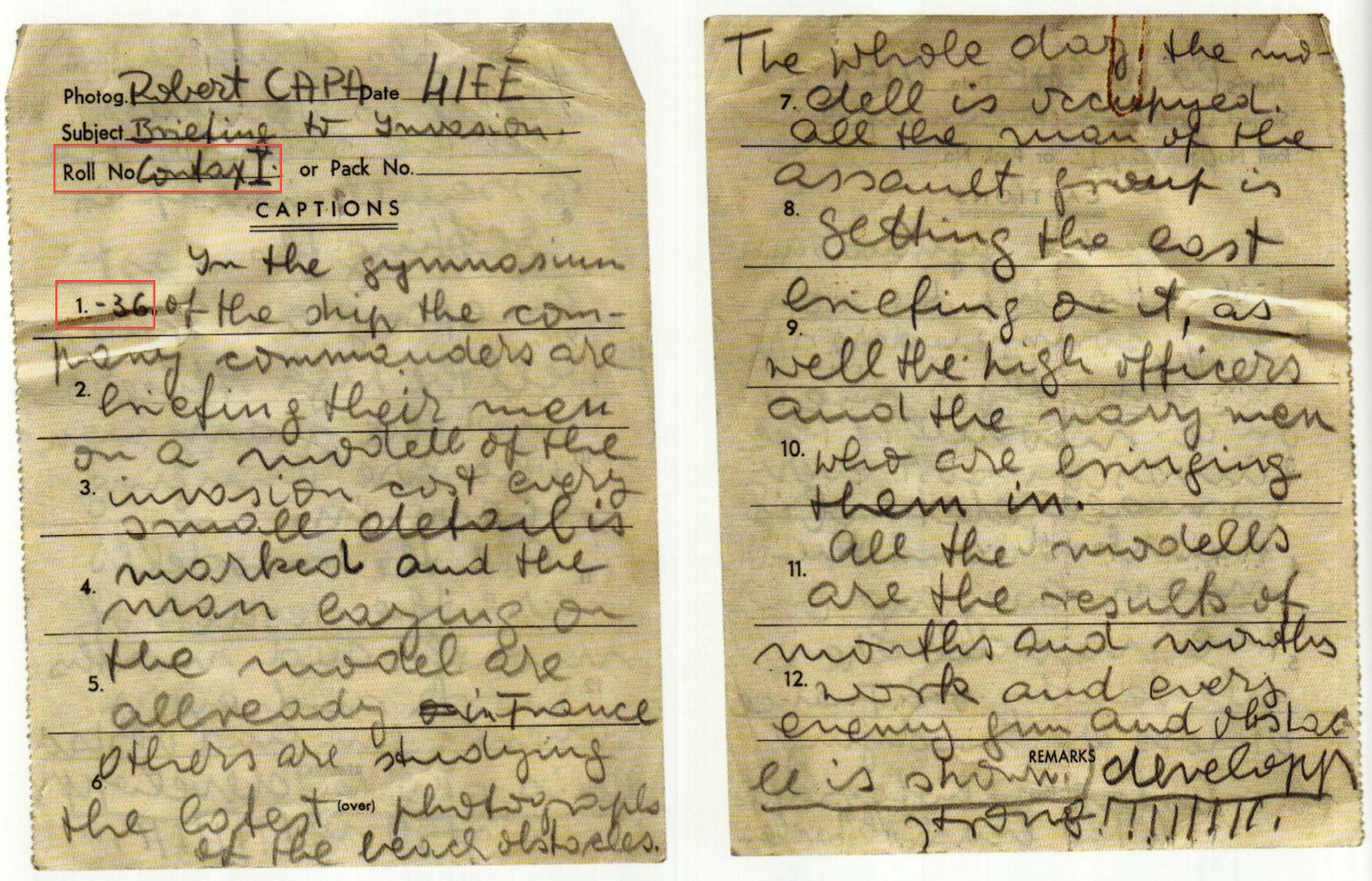




Hello A.D Coleman, Allan, AD… (i am always a bit confused how to address you…sorry)
I have been following your posts about the Robert Capa D-Day photographs.
It is always fascinating to know “The rest of the story”.
Regarding the contact sheets at the Magnum offices in New York City:
In 1964, I had received an ASMP internship through a Kappa Alpha Mu (photojournalism fraternity) college photography competition. I was 22 and a student at Southern Illinois University at the time and extremely excited to have the opportunity to spend a summer in New York City.
My internship was supposed to have been with Ernst Haas. When I arrived in NY
i found that he was off in the Holy Land working on the film The Bible with John Huston.
Therefore, I was shuttled around to various photography related places to fill my time as a summer intern.
One of the places I spent a little time was at the Magnum offices. It was a last minute imposition on the staff and they were very kind and found ways to keep me occupied. One of the opportunities they gave me was permission to look through any of the contact sheet files in the office. So, i spent several days looking at whatever i wanted. Many hours were spent fascinate by the contact sheets of Henri Cartier-Bresson. This was a great part of my early education.
I do not remember what else i saw at that time but I just want to confirm to you and Cynthia Young that there were at least some contact sheets available for viewing in the binder format at that time. Summer, 1964.
Since I am now 72, there should be former Magnum employees who might be able to verify the existence of the Capa contacts.
I also remember that there was a very good high-end photography printing lab downstairs in the same building. The printer there was quite well known at the time (however, I forget his name) and did much of the printing for Magnum.
Best wishes to you and your continued good work!
Franco Salmoiraghi
Thanks for this. Every little bit helps.
Given Magnum’s limited funds and staff and other resources in its early days, I consider it safe to assume that production of these contact-sheet binders for the work of the Magnum members took years. (The Capa set alone stretches to more than 50 binders; he was not a grab-shooter, and his output stopped with his death in 1954.)
So if they had these in place for (lucky!) you to peruse in summer ’64, they had to have initiated the binder project years earlier. Absent a more precise and verifiable date, let’s say 1960.
Peter Marshall of the UK has posted a strong response to this installment of the saga at his blog Re: PHOTO — “Capa’s Missing Negatives Found,” dated 10/16/14. He concludes, “It seems clear now that it’s time for Morris, now 97, to tell the truth about what happened, despite any promises he may have made at the time.”
Great work !